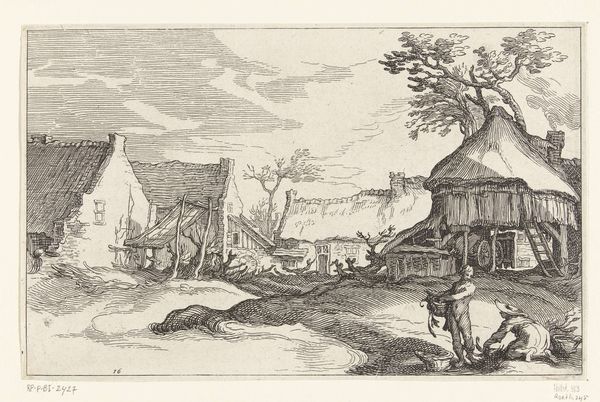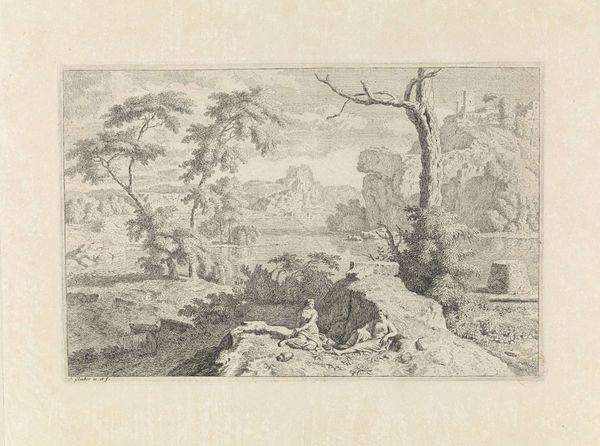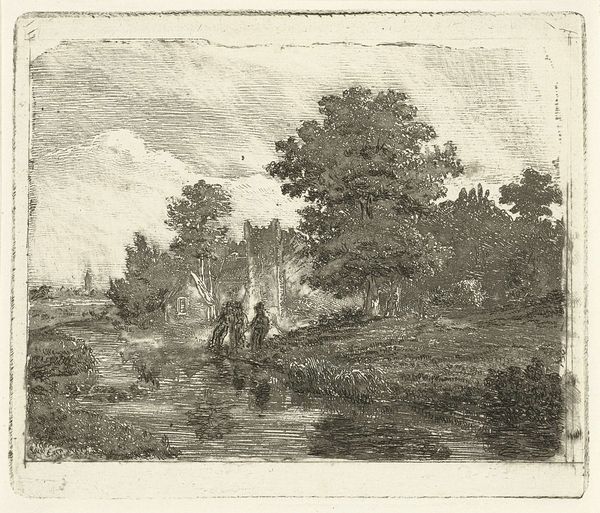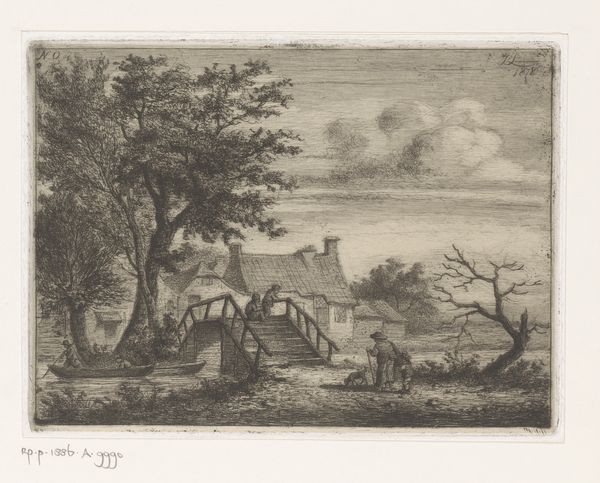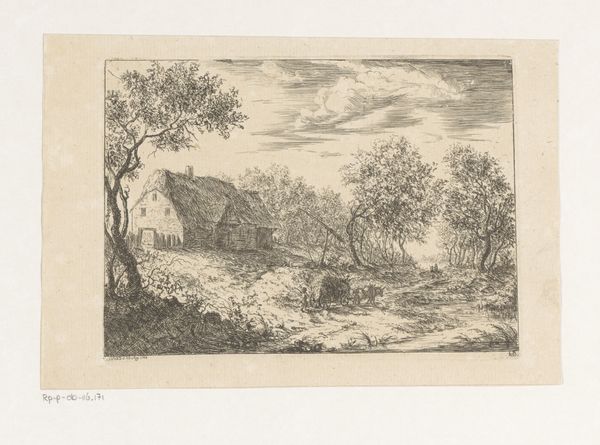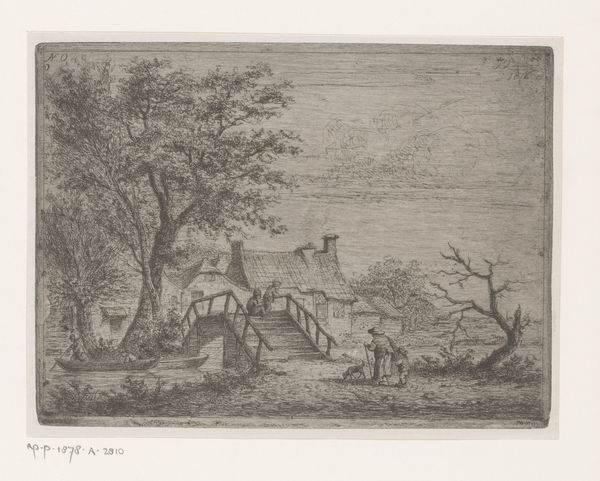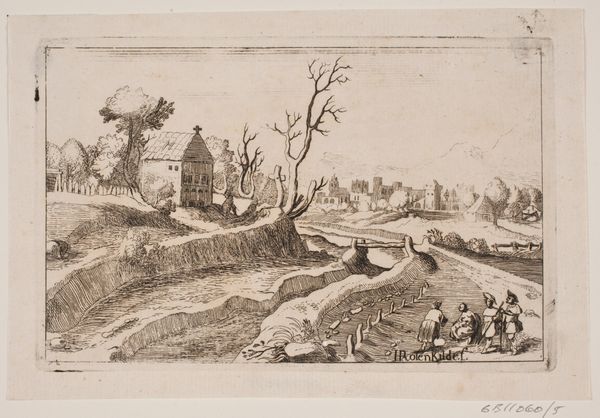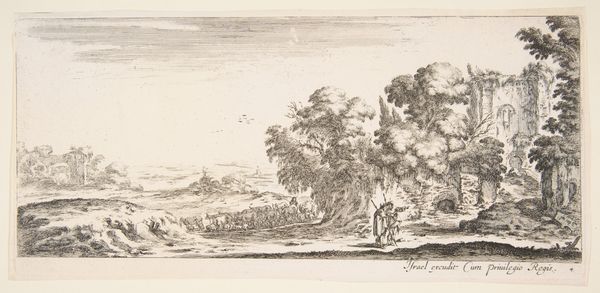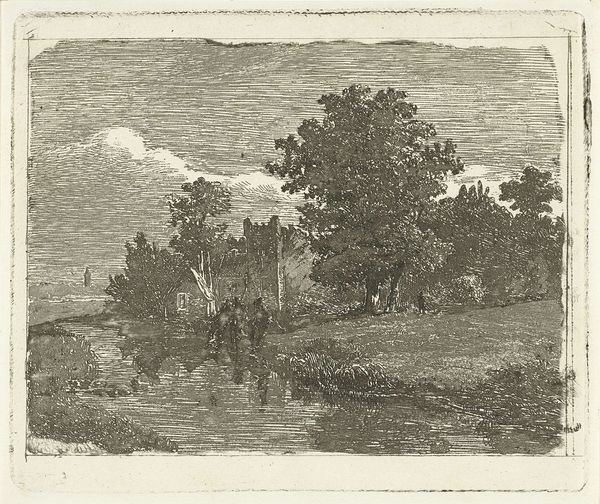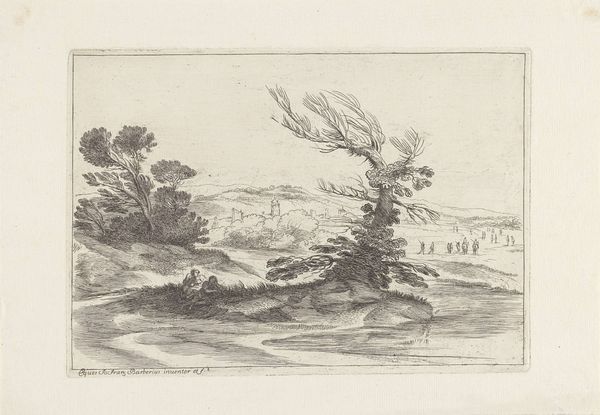
drawing, print, engraving
drawing
amateur sketch
light pencil work
quirky sketch
pen sketch
pencil sketch
incomplete sketchy
landscape
personal sketchbook
romanticism
pen-ink sketch
line
pen work
sketchbook drawing
engraving
Dimensions: height 163 mm, width 199 mm
Copyright: Rijks Museum: Open Domain
Dirk Hussem created this etching, "Willows by a Farmhouse," using metal, acid, and ink. The artist would have covered a metal plate with a waxy ground, scratched an image into it, then dipped the plate in acid. The acid bites into the exposed metal, creating recessed lines. Printing is a labor-intensive process. Hussem would have carefully inked the plate, wiped the surface clean, leaving ink only in the etched lines, and then pressed paper against the plate to transfer the image. This demonstrates the value of craft and hand production in a world that was rapidly industrializing, and the way it imbued artworks with social or cultural significance. Hussem was not simply recording a scene, but engaging in a skilled tradition. This process involves technical mastery and physical effort, giving the final print a unique quality. It’s a reminder that "fine art" often relies on methods and values shared with craft.
Comments
No comments
Be the first to comment and join the conversation on the ultimate creative platform.
